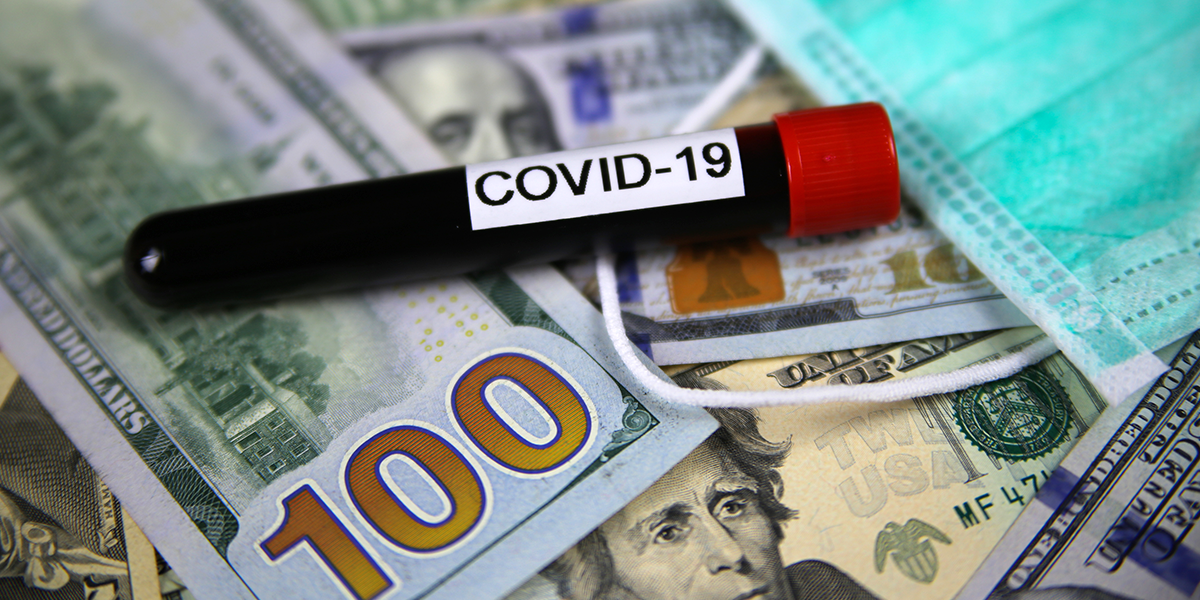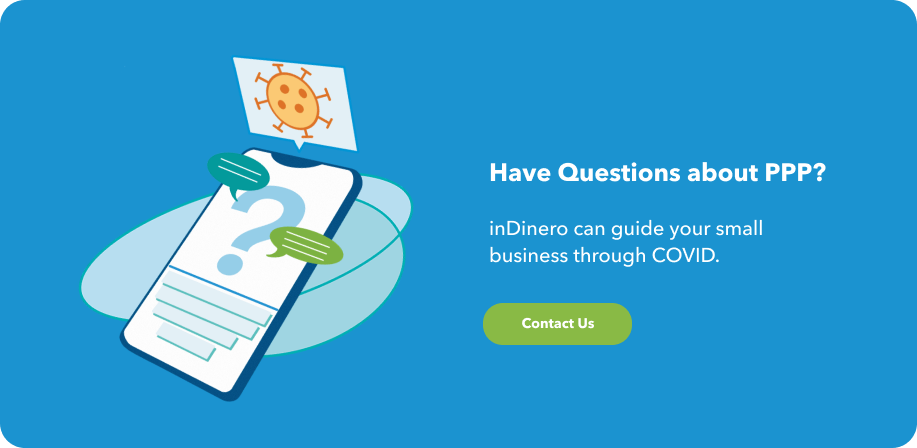After a rollercoaster of week in DC, the “Phase III” relief package, the Coronavirus Aid, Relief, and Economic Security (CARES) Act, became federal law on March 27, 2020. And instead of relaxing over the weekend, trying their hand at baking bagels or binging Netflix, business owners around the country scoured the internet for what the CARES Act actually is and how it can help them through this drastic economic crisis.
Our tax experts and CFOs have reviewed the final text to understand what this means for you and the options you may be able to take to protect your business and team. Here are five important things you need to know based on questions you might be asking yourself:
1. How do I protect my employees? The Paycheck Protection Program might be right for you
If you’re one of the millions of business owners trying to keep their employees on payroll and business open, the Paycheck Protection Program can help. The program provides cash-flow assistance through 100% federally guaranteed loans to eligible small businesses who maintain their payroll during the coronavirus pandemic.
Under this new program (which has zero cost to apply for), employers can get a loan, with a maximum interest rate of 1%. The loan proceeds can be used to cover costs incurred between February 15, 2020, and June 30, 2020, referred to in other areas of the law, and below, as the “covered” period.
Are you eligible to apply for and get one of these loans?
- Businesses with up to 500 employees or businesses that meet the SBA’s “small business concern” definition are eligible. Under this program, your total number of “employees” includes your full-time and part-time employees, in addition to individuals who work with you seasonally or on a temporary basis.
- Non-profit organizations are also eligible for these loans.
- Affiliation rules apply, please see SBA’s affiliation guidelines for more information. This could have a significant impact on venture capital-backed companies, which means many tech companies might see an impact here.
As of April 3, 2020, an individual contractor or sole proprietor now have the ability to apply for a Paycheck Protection Program loan on their own and therefore they do not count for purposes of a borrower’s Paycheck Protection Program loan calculation.
How much can you borrow and what are the terms?
- The lesser of either 250% of average monthly “payroll costs” (from the prior 12-month period) OR $10 million
- The first payment isn’t due for six months; these are generally 30-year loans.
- Payroll costs include salaries, wages, payment of cash tips, vacation and several other types of paid leave, health and retirement benefits, and state and local taxes (relating to payroll). It also includes payments to sole-proprietors and independent contractors of not more than $100,000 in one year (with some prorating rules).
- Payroll costs do not include compensation for employees with payroll costs over $100,000, employees who domicile principally outside of the U.S., and any qualified sick or family medical leave eligible for a Coronavirus relief credit. You may be able to lower employees’ compensation to allow those costs to qualify.
- Loans will be issued via the SBA’s network of 7(a) program lenders and will be 100% guaranteed by the SBA. There are no application fees or closing costs allowed and no collateral or personal guarantee required, expediting the application process, getting money to your bank in significantly less time. While getting you money fast is the plan, please know it’s likely that there will be payment delays.
- The maximum interest rate lenders can charge is 1% and the maximum loan term is 2 years. The first 6 months of payments (principal and interest) are automatically deferred.
What can the loan be used for?
The loan can be used to help cover payroll costs (including costs related to the continuation of group health care benefits), mortgage interest payments, rent, utilities, and interest on prior debt for the 8-week period beginning on the date of loan.
When and how can you apply?
- Be sure to apply by June 30, 2020.
- Under the CARES Act, all lending institutions are approved by the SBA to issue Paycheck Protection Program loans.
- The SBA is still finalizing its final guidance to lenders, and until it’s finalized, you cannot apply for these loans. We expect guidance to come down any day and we’ll update you the moment it does!
2. How do I just keep the lights on for now? Let’s talk about the Economic Injury Disaster Loan and Grant
One valuable part of the CARES Act is the expansion of the Economic Injury Disaster Loan (EIDL) and Emergency Economic Injury Grants. Many businesses may qualify for this prior to any other loans being provided. Why?
Because the Emergency Economic Injury Grant provides an emergency advance of up to $10,000 to small businesses and private non-profits harmed by COVID-19 within three days of applying (processing delays may exist; we don’t know for sure) for an SBA Economic Injury Disaster Loan (EIDL). Essentially, to access the advance, you first have to apply for an EIDL and then request the advance. The advance can be used to maintain payroll and is not required to be repaid even if the borrower’s request for the EIDL is denied.
Are you eligible to apply for and get one of these loans?
Eligibility for this loan includes the following:
- Businesses with less than 500 employees (a few exceptions apply)
- Some businesses with more than 500 employees — see SBA Size Standards
- Sole proprietors, with or without employees, or independent contractors
- Employee owned businesses and cooperatives with less than 500 employees
- Many non-profit organizations and tribal small businesses
How much can you borrow and what are the terms?
- The Economic Injury Disaster Loans offer up to $2 million with a $10,000 advance that does not need to be paid back even if you are denied the loan.
- The interest rate is 3.75% for small businesses and 2.75% for non-profits. The first payment is typically deferred for a year.
- The loan terms can be as long as 30 years and is not eligible for loan forgiveness.
- Credit history and the ability to repay are factors for loan approval; collateral and personal guarantees, for businesses, are generally not required.
- EIDLs can be approved by the SBA based solely on an applicant’s credit score.
- EIDLs that are smaller than $200,000 can be approved without a personal guarantee.
What can the loan be used for?
The loan may be used to keep employees on payroll, to pay for sick leave, meet increased production costs due to supply chain disruptions, or pay business obligations, including debts, rent and mortgage payments.
When and how can you apply?
You can apply for these loans now through the SBA’s website. Click on this link to get started right away.
Take a look at our side-by-side comparison of the Economic Injury Disaster Loan and the Paycheck Protection Program to see which is right for your business.
3. What are my options for loan forgiveness? Here’s how you can get the Paycheck Protection Program loans forgiven
This program provides generous loan forgiveness opportunities for many borrowers. The rules were created to encourage businesses to keep their employees, maintain wages/salaries and, in some cases, encourage the rehiring of employees. In many cases, all of the loan may be forgiven if certain rules are met. Normally, a forgiven loan creates taxable income; when it comes to this loan, it doesn’t. This is one of the things that might make this a good choice for your business.
4. I heard there’s a new tax credit—the Employee Retention Credit. What’s the deal with that?
While both SBA loan options have merit, perhaps neither makes sense for your business, or perhaps your business doesn’t qualify for either. There are still options available for you, particularly in the tax realm. One in particular, the Employee Retention Credit for employers subject to closure due to COVID-19, can be helpful to those businesses that have already had to close due to government orders.
The Employee Retention Credit was designed to encourage businesses to keep employees on their payroll. It’s a refundable tax credit that can be applied to current payroll taxes. The maximum credit amount is $5,000 per employee. That’s a pretty big savings!
This credit is a fully refundable 50% tax credit applicable to the employer’s share of payroll taxes on wages up to $10,000 per employee. The credit is based on salaries and wages paid from March 13, 2020 through December 31, 2020.
Before we dive any deeper into this, we want to caveat this by saying that under the CARES Act, businesses can elect to take advantage of either the Paycheck Protection Program OR the tax relief options outlined below. You cannot take advantage of both.
Are you eligible for this tax credit?
- Eligible Employers, for the purpose of the Employee Retention Credit includes nearly all US businesses, including most nonprofits, whose operations were either: fully or partially suspended because of an official government order related to COVID-19, OR who experienced a significant decline in gross receipts during the calendar quarter, usually a 50%, decline compared to the same fiscal quarter in 2019.
- There are complex guidelines about what an eligible employer and employee are; talk with your tax professional.
- Businesses that take Small Business Loans do not qualify.
How do I get the Employee Retention Credit?
Work with your payroll processor to reduce the amount of your federal payroll tax deposit by the amount of your eligible credit.
In addition to this credit, can I defer my payroll taxes?
Yes! The 6.2% of FICA that your business pays for employees, from March 27, 2020 to December 31, 2020, can be deferred and paid over two years. As long as you don’t take a loan under the Paycheck Protection Program. The amounts deferred would eventually be due, 50% by December 31, 2021 and 50% by December 31, 2022.
Have more questions about tax credits? Talk to our experts today to see how we can help.
5. What if I have an employee unable to work due to COVID? Get tax relief under the Families First Coronavirus Response Act
For those of you who have employees needing sick or family leave due to COVID-19, this is the section for you.
We’ve already broken down the Families First Coronavirus Response Act in a previous blog, but let’s take a moment to see what’s new and why you should care. First and foremost, this Act pertains to businesses with fewer than 500 employees and tax-exempt organizations. The CARES act has expanded on this with further clarification on various sick and family leave credits.
When can an employee claim paid leave?
An employee may claim paid leave for any of the following reasons related to the coronavirus public-health emergency:
- They have been exposed to the coronavirus or exhibit symptoms of it.
- They are recommended to be quarantined by a healthcare provider and cannot work from home.
- They need to care for a family member who has been exposed to or exhibits symptoms of the coronavirus.
- They need to care for a child younger than 18 years old because their school or daycare is closed, or their childcare provider is unavailable.
What tax relief do I get if my employee is on this paid leave?
- You can collect a tax credit equal to 100% of qualified emergency sick-leave and family-leave payments.
- Credit is up to $511 per day or $5,110 total per employee for wages paid to employees impacted by COVID-19 measures for a maximum of 10 days (individual is under quarantine by doctors’ orders, ill with COVID-19 like symptoms seeking diagnosis, or contracted the disease). OR $200 per day or $2,000 per employee total for care of a family member impacted by COVID-19 by either illness, seeking diagnosis for symptoms or for child care of a dependent or maximum of 10 days.
- The credit, in some cases, is refundable.
- Sick Leave and Family Leave payments are exempt from the employer portion of social security taxes.
- You’re still obligated to pay the employer portion of Medicare taxes, but you can claim a credit for the payment.
How do I know what is the best option for my business?
We’ve just hit you with a lot of information and more than a couple of options. On the one hand, it’s exciting to have some options to help get your business through this crisis, but on the other hand, too much information makes for an overwhelming experience.
That’s what we’re here for. Let us help you figure out which option is best for you. You’re not alone in this.
Connect with indinero today to see how we can help save your business.

Quick Note: This article is provided for informational purposes only, and is not legal, financial, accounting, or tax advice. You should consult appropriate professionals for advice on your specific situation. indinero assumes no liability for actions taken in reliance upon the information contained herein.




